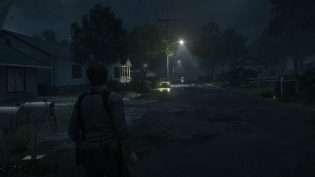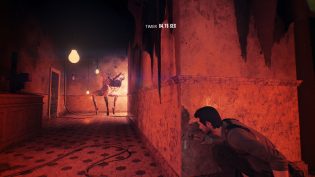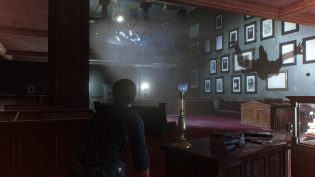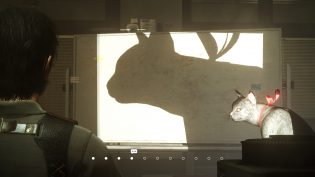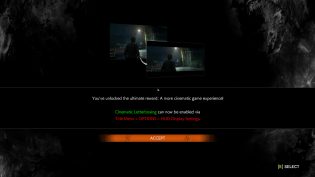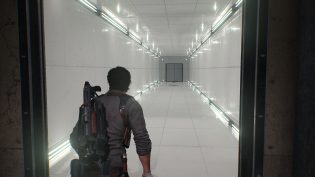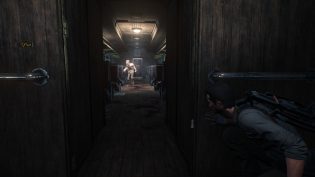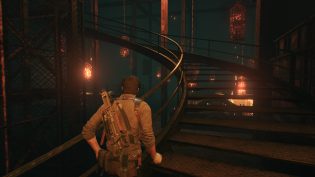When I completed The Evil Within several years ago I felt relieved. It was the kind of relief you have after going through a meeting with a dentist or removing a painful thorn. The “oof, I hope I won’t go through this ever again” kind of relief. Which, if you ask me, is a terrible feel for a game to evoke. Evoking the absolute worst features of a game from Shinji Mikami, it focused on punishing the player way too much, while giving back way too little enjoyment in return. It didn’t just make you question the reality of the events in the game, but also yourself and your choice to play this goddamn game in the first place. It had some amazing ideas, however, and its story DLCs were showing clear understanding of mistakes made in the main game.
When it was announced that there will be a sequel, my only question was “But why?” However, when it became clear that it would be developed by the makers of the aforementioned DLCs, I got curious. For a good reason, it turns out.
In my whole gaming life I can’t think of very many examples of game sequels which feel just outright better in every way, while retaining the same gameplay core. And… well, The Evil Within 2 isn’t better in every way, but it’s better in most of them. It’s still a stealth-focused action adventure horror with very limited resource, escaping and avoiding enemies as a valid choice and exploration being important. But, and I don’t know how to say it nicely, so I will say it as is – the game is no longer being an asshole about any of this. It punishes mistakes, sometimes very severely, especially in the beginning, but wants to see you succeed. It gives you limited resources, but makes sure that if you understand the core mechanics, you will be able to use them efficiently and they will be enough. It makes stealth be a more viable and effective solution to a lot of problems than it ever was in the first game. And it has a genuinely interesting world to explore.
Hell, while the first game touted itself for being “the survival horror” without understanding the core ideas of what survival horror used to be about, The Evil Within 2 feels like a valid evolution of the genre. It’s something Alone in the Dark (2008) tried to do 10 years ago and, sadly, failed miserably. But this game succeeds.
Majority of the game, though it’s sadly more prominent at the start, is built around rather open areas of the more or less generic looking American Dream virtual city gone nightmare. And you can stealth around those areas, exploring different sections, clearing up your path with guns or silent kills as you go, finding helpful items and materials for a crafting system that is actually not frustrating and gathering. And even maybe doing sidequests, as there are a few of those here as well. First game only tried similar things in more limited areas, but here it’s done on a larger scale, yet still with intricate smart design and cool things happening in a more localized manner. Progress is still divided into chapters, sure, but a lot of them are just “milestones” signifying the plot moving forward and some things changing, yet a lot of early areas remaining available for exploration even quite late into the game.
This overall structure, of course, has some downsides as well. While the game is visually amazing and has a lot of memorable moments or really smart and unexpected transitions or visual changes, it tends to feel slightly less varied than the first game. Original went with copying RE4 location progression structure which lead to each chapter feeling quite new and often unexpected. In this game you spend more than the half of the whole time, at least if you are exploring a lot, in 2 distinct and rather bland environments. It switches things up enough, but still – the main location design hour in and at about 17 hour into the game will most likely be pretty much the same. Luckily, it never gets boring to play.
To follow the story as well, at least most of the time. It gets… silly by the end. Just chock-full of most predictable cliches and tropes you can think of. But hey, the story of the original game wasn’t more original either, it just held the pretense that the characters do not understand if things are real or not for a while, where here everyone knows that everything isn’t real (though, still deadly). It even leads to some extremely cheesy and enjoyable dialogue where you can feel that developers might’ve considered adding canned laughter, or ridiculous references in one of the optional areas of the game. It’s almost refreshing to see the game being serious, yet fully accepting it’s ridiculous premise and just going with it in the most entertaining way it can.
And that’s what The Evil Within 2 in general – it takes everything that was at the core of The Evil Within 1 and DLCs and makes it as entertaining and fun to play as it can. Through challenging the player, instead of hating the player. Through entertaining the player, instead of making them question why are they even playing this. Through making sure that every mechanic and system in place can work in a fun and expected way in every situation. And through embracing itself for what it is – a really fun and exciting horror stealth action adventure video game. And a really good one at that.


